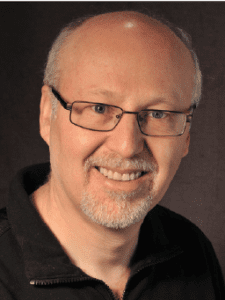Back to Basics | November 2016 Hearing Review

My new phone for about a year now is the iPhone 6. It has great apps and its usability is infinitely better than my old Blackberry…but I still miss the elevated buttons. Now I need to look down at the screen to type a message!
One thing that I like about my iPhone 6 and my old Blackberry is that I can plug in my earphones. It is now well-known that the new iPhone 7 won’t even have an earphone jack (unless I use an adapter and plug it in through the charging port).
I realize that we now live in the 21st century, and Bluetooth and other wireless protocols rule the world. However, the new iPhone 7 will only have a small assortment of wireless earphones to choose from.
My real consternation is that the range of wireless earphones are limited in their performance. A Bluetooth-enabled wireless earphone is simply a Bluetooth enabled wireless earphone. Let me talk about my two favorite earphones—the ones I get my kids and friends for their birthdays or as holiday gifts.
I’m not going to name names, but I use a nice, sleek-insert pair of earphones with a resonance in the 3000 Hz region that offsets the inherent loss of hearing the diffuse sound field due to an insertion loss. That is, my favorite earphone has a 15 dB resonance at 3000 Hz; the net effect is a perfectly flat response at the eardrum. This provides a truly “transparent” response, as if I had nothing in between the MP3 and my ears.
I am skeptical whether any of the available wireless earphones have this type of response (and indeed most of the commercially available wired earphones also don’t have this type of response). I haven’t done an exhaustive search, but I have spent hours browsing the shelves of my favorite high-tech retail outlets looking at the “specs.” Without extra output in the 3000 Hz region for insert earphones to help offset the insertion loss, the response will not truly be flat or uniform.
Another type of earphone is the one that I recommend to all of the grandmothers I see in my clinic. Well, I don’t recommend it for them, exactly. Let me explain. The number one question I am asked as elderly Mrs Smith is walking out of my office is “Should I buy my granddaughter a Walkman for Christmas?” Of course I ignore the cute, but archaic, reference to the Walkman.
This is actually a great question. In response, I usually spend 5 minutes (while standing at the elevator) summarizing the work of Brian Fligor and explaining the 80/90 rule…80% volume for 90 minutes a day is about half of the daily sound exposure limit; if your favorite song comes on, turn up the volume, but just remember to turn it down after.
Before the very slow elevator arrives, I tell grandma about the available earphones that have reduced sensitivity and ensure that any kid will never be overexposed to excessive noise levels. This is accomplished with no audible (or measureable) distortion.
(For an example of my earphone recommendation, see: http://www.etymotic.com/consumer/earphones/ek5.html)
I wonder whether there are any wireless headphones that can be used with the iPhone 7 that have that feature. Again, I have tested many wired and wireless earphones over the years and most of those that are designed to be “kid safe” merely peak-clip the signal above about 95 dB SPL such that the young listener is provided with a highly distorted sound.
Maybe in the future, but not yet. All of this leads me to wonder if Apple should have held off on removing the wired earphone jack until wireless earphone technology catches up with what is currently available in the marketplace? Perhaps things will catch up with the iPhone 8 or 9.
Portions of this article were edited and adapted from a post that appeared in Dr Chasin’s blog at hearinghealthmatters.org.
Marshall Chasin, AuD, is an audiologist and the Director of Auditory Research at the Musicians’ Clinics of Canada, Adjunct Professor at the University of Toronto (in Linguistics), and Associate Professor in the School of Communication Disorders and Sciences at the Western University. He is the author of over 200 articles and 7 books including Musicians and the Prevention of Hearing Loss. He has also recently developed a new app called the Temporary Hearing Loss Test app.
Correspondence can be directed to: [email protected]
Original citation for this article: Chasin M. Back to Basics: My Rant About the iPhone 7. Hearing Review. 2016;23(11):12.?






